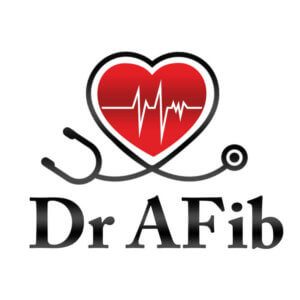Are you navigating the challenges of persistent atrial fibrillation? This heart condition, where an irregular and often rapid heartbeat lasts for over a week, demands attention and informed care. From understanding its symptoms to exploring treatment avenues, this article is your roadmap through the complexities of persistent AFib, all aimed at safeguarding your heart health and improving symptoms.
Key Takeaways
- Persistent atrial fibrillation is a heart condition characterized by an abnormal and rapid heartbeat lasting for at least seven days.
- Risk factors for AFib include age, genetics, conditions like hypertension, obesity, and lifestyle choices such as smoking and alcohol consumption, with the incidence of AFib expected to increase significantly due to the aging population.
- Treatment options for persistent AFib include medications for heart rate and rhythm control, anticoagulants to prevent blood clots, catheter ablation, cardioversion, and lifestyle modifications to manage symptoms and prevent complications.
Defining Persistent Atrial Fibrillation

Persistent atrial fibrillation, an abnormal and rapid heartbeat that lasts continuously for at least seven days, needs medical intervention as it is unable to self-convert back to a normal rhythm.
Persistent AFib often progresses from a less severe form, paroxysmal atrial fibrillation, marked by intermittent symptoms. It is, however, distinguishable from permanent AFib, sometimes called long standing persistent AFIb, a chronic condition poorly responsive to treatment.
Paroxysmal Atrial Fibrillation
Paroxysmal atrial fibrillation, also known as paroxysmal AFib, is characterized by AFib symptoms that come and go. These episodes usually last for a few minutes to hours and can recur repeatedly but will usually return to normal rhythm within 7 days, with or without treatment.
In general, paroxysmal AFib is an earlier stage of atrial fibrillation, while persistent AFib represents a more advanced or progressive form of atrial fibrillation.
Persistent atrial fibrillation is diagnosed when these episodes do not self-resolve, and the heart maintains in an irregular rhythm without treatment.
Permanent Atrial Fibrillation
Permanent atrial fibrillation, also called chronic AFib, or long standing persistent AFib, is characterized by a heart rhythm that has lasted for more than a year and does not revert to normal, even with medical intervention. In simpler terms, it is a form of persistent atrial fibrillation that has become chronic.
The transition from persistent to permanent is significant as it indicates that the heart’s rhythm has not reverted to normal even with treatment, making it a more severe form of the condition, which is usually poorly responsive to treatment.
Prevalence and Risk Factors

Atrial fibrillation is not a rare condition. In fact, at least 5 million Americans live with it, with many of those cases being persistent or long-standing persistent AFib. This number is projected to reach between 6 to 16 million in the United States alone by 2050.
Interestingly, racial and ethnic differences in AFib prevalence exist; for instance, prevalence and incidence are lower in Asians and blacks when compared to individuals with European ancestry, despite blacks having a higher burden of comorbidities.
Several common risk factors contribute to the onset of AFib, including:
- Advancing age
- Higher body mass index
- Hypertension
- Diabetes mellitus
- Obstructive sleep apnea
- Myocardial infarction
- Heart failure
- Smoking
- Genetic predisposition
Lifestyle factors such as smoking, alcohol consumption, and obesity are particularly significant contributors, especially at younger ages, while the highest population attributable risk for development is carried by high blood pressure, also known as hypertension.
Age and Gender
While anyone can develop AFib, the risk significantly increases with age. It’s the most significant risk factor for atrial fibrillation, with the incidence sharply increasing after 65 years of age. The expected doubling of the adult population over 65 years old from 2010 to 2040 suggests that atrial fibrillation prevalence will likely increase correspondingly.
In terms of gender, although the absolute number of men and women with atrial fibrillation is similar on a population basis, women over 75 years old show greater prevalence, partly due to increased longevity. For women, having more pregnancies is associated with an increased risk of AFib, with each additional pregnancy further increasing the risk of AFib later in life.
Lifestyle and Health Conditions
Lifestyle choices can significantly impact the risk of developing AFib. For instance, smoking increases the risk in a dose-dependent manner, with active smokers at higher risk than former smokers. Also, each additional daily alcoholic drink is associated with a nearly 8% increased risk of developing atrial fibrillation, especially in heavy drinkers.
Obesity is another major contributor. The global increase in overweight and obesity statistics is contributing to the growing public health concern and higher risk of developing atrial fibrillation. Moreover, pre-existing health conditions such as diabetes, commonly associated with obesity, can also increase the likelihood of developing AFib.
Symptoms and Detection

The symptoms of persistent atrial fibrillation can vary widely. Some people experience heart palpitations, a quivering heart, or the sensation of the heart skipping a beat. Surprisingly, some people may not experience any noticeable symptoms at all.
In persistent AFib, the heart rate may be significantly increased, ranging from 100 to 175 beats a minute, and can easily go over 100 beats per minute. A normal heart rhythm typically has a resting heart rate ranging from 60 to 100 beats per minute, which is significantly different from AFib in most cases.
Should you experience symptoms, especially irregular heartbeat and chest pain, urgently consult a cardiologist or electrophysiologist.
Persistent atrial fibrillation is frequently diagnosed with physical exams, checking heart rate and rhythm, and an electrocardiogram (ECG or EKG).
Medical Tests and Diagnosis
Diagnosis of persistent atrial fibrillation typically involves a full medical investigation and the use of an electrocardiogram (ECG) to record the heart’s rhythm and electrical activity. This ECG machine traces abnormal heart rate signals on paper, which is fundamental in identifying AFib.
For patients where it is difficult to capture an episode of AFib during a standard ECG test, portable heart monitors such as a Holter monitor or event recorder might be employed. Some cases might require the use of an implantable loop recorder or an echocardiogram.
Heart Rate Monitoring at Home
The advent of home-based heart rate monitoring has revolutionized the detection and management of atrial fibrillation (AFib). Devices such as smartwatches, notably the Apple Watch, are equipped with sophisticated sensors that can alert wearers to irregular heart rhythms suggestive of AFib, and track heart rate.
Similarly, KardiaMobile devices provide a portable, user-friendly platform for electrocardiogram (ECG) monitoring, enabling users to capture ECG data and detect AFib with ease.
Additionally, some blood pressure cuffs come with the capability to monitor for irregular heartbeats during routine measurements, offering another layer of screening for heart rhythm abnormalities. These home monitoring options empower patients with persistent AFib to actively participate in their healthcare, potentially leading to earlier intervention and better outcomes.
Treatment Options for Persistent Atrial Fibrillation

While persistent AFib may sound daunting, treatments are available to improve this condition. These include medications to control heart rate and rhythm, anticoagulants to prevent blood clots and stroke, and procedures such as catheter ablation.
Lifestyle adjustments significantly aid AFib management. While these treatments can manage symptoms, vigilance for adverse effects like low blood pressure and development of heart failure is essential. Subsequent subsections will delve into each treatment area in detail.
Rate vs Rhythm Control in Atrial Fibrillation
Understanding the difference between rate and rhythm control is crucial in the management of persistent atrial fibrillation (AFib). Rate control aims to regulate the speed of the heartbeat, ensuring that the heart doesn’t beat too quickly. This approach doesn’t necessarily restore a normal rhythm but rather keeps the heart rate at a safe level, reducing symptoms, reducing complications, and improving the patient’s quality of life. Common medications for rate control include beta-blockers and calcium channel blockers.
On the other hand, rhythm control strategies attempt to restore the heart’s natural rhythm, known as sinus rhythm. This can be achieved through anti-arrhythmic medications, electrical cardioversion, or procedures such as catheter ablation. While rhythm control can be beneficial, especially in the earlier stages of persistent AFib, the success rate diminishes the longer a patient has been in persistent atrial fibrillation. The heart’s atrial remodeling over time due to AFib makes it more challenging to maintain a normal rhythm after conversion, often leading to a lower success rate in long-standing cases.
The choice between rate and rhythm control is influenced by several factors, including the patient’s symptoms, the duration of AFib, underlying health conditions, and the risk of stroke. Both strategies have their place in AFib management, and the decision should be tailored to the individual patient’s needs and medical history.
Medications
Persistent AFib is commonly first treated with medications such as beta blockers – metoprolol, bisoprolol or atenolol, and calcium channel blockers like verapamil or diltiazem to control the heart rate and reduce symptoms. In some cases, anti-arrhythmic drugs, like amiodarone, sotalol, or flecainide, are used to control heart rhythm, in an attempt to return a patient to normal sinus rhythm.
Anticoagulants, also known as blood thinners, including options like apixaban, dabigatran, edoxaban, and rivaroxaban, as well as warfarin, are essential in preventing blood clots and reducing the risk of stroke in patients with persistent atrial fibrillation. However, the risk of bleeding must be assessed using the HAS-BLED scoring system, which influences the choice and management of oral anticoagulation therapies to minimize complications.
Procedures
If medications prove ineffective or intolerable, procedures such as catheter ablation and cardioversion may be employed. Catheter ablation, which interrupts abnormal heart electrical circuits using catheters and an energy source, is one such procedure.
The single-procedure success rate of catheter ablation for persistent AFib is approximately 50-60% over a 1-2 year follow-up period without anti-arrhythmic drugs. The success rate can be higher when multiple procedures are performed, reaching up to 70-80%.
Overall, the success rate for a catheter ablation procedure is lower in persistent atrial fibrillation, when compared to paroxysmal AFib. In addition, the longer the duration of persistent AFib, the lower the success rate of a catheter ablation. I usually tell my patients with persistent AFib that there are more likely to need more then one procedure to obtain good control over AFib.
In patients with heart failure, catheter ablation has shown effectiveness in improving survival, reducing hospitalizations, enhancing functional capacity, and improving quality of life.
Lifestyle Changes
Sustainable lifestyle changes greatly impact AFib prevention and management. Maintaining regular moderate exercise, while avoiding both inactivity and extreme physical exertion, helps forestall AFib development and ameliorates symptoms in those already affected.
Weight loss strategies in obese individuals have shown significant reductions in AFib burden, highlighting obesity’s strong association with AF. Dietary changes, including a Mediterranean diet and reduced processed foods, aid in controlling weight, blood sugar, and blood pressure, benefiting AFib management.
Better control of blood sugar levels in patients with type 2 diabetes is beneficial in reducing the severity and occurrence of AFib episodes.
Complications and Prognosis

Even with effective treatment options, persistent atrial fibrillation can still result in complications like heart failure and an elevated risk of stroke. As atrial fibrillation progresses, the intertwined pathologies and risk factors of AFib and heart failure can exacerbate patient outcomes when they occur simultaneously.
Treatment with catheter ablation has shown to significantly reduce all-cause mortality and improve left ventricular ejection fraction in patients with heart failure when compared to drug therapy.
Stroke Risk
The risk of stroke increases with age in patients with persistent atrial fibrillation. To manage this risk, stroke assessment is conducted using scoring systems such as CHADS2 and CHA2DS2-VASc, which evaluate various factors including heart failure, hypertension, age, diabetes, and prior stroke.
For stroke prevention, patients with persistent AFib are often prescribed anticoagulants, especially when direct-acting agents are unsuitable. Assessing a person’s stroke risk is a crucial step in the management of AFib, with most patients expected to require anticoagulation therapy.
For patients that are unable to tolerate prescribed anticoagulant medication, left atrial appendage closure procedures, such as a WATCHMAN procedure, can be beneficial.
Heart Failure
Persistent atrial fibrillation impairs the heart’s ability to pump blood effectively, potentially leading to heart failure over time. A rapid ventricular response, characterized by the rapid contraction of the upper chambers (atria) causing the lower chambers (ventricles) to beat quickly, can contribute to heart failure if not properly managed.
Despite these serious complications, many patients can lead normal, healthy lives with appropriate treatment, indicating a manageable prognosis. With a comprehensive understanding of persistent atrial fibrillation, you can navigate this condition with confidence.
Summary
In conclusion, persistent atrial fibrillation is a widespread medical condition characterized by a prolonged irregular, rapid heartbeat. While it poses significant health risks, including stroke and heart failure, understanding its symptoms, risk factors, and treatment options is instrumental in managing it effectively. With timely detection, appropriate treatment, and necessary lifestyle changes, individuals with persistent atrial fibrillation can lead normal, healthy lives.
Frequently Asked Questions
How serious is persistent atrial fibrillation?
Uncontrolled persistent atrial fibrillation can lead to weakening of the heart muscle and may result in heart failure in extreme cases. It is important to seek medical treatment and management to minimize these risks.
What is the best treatment for persistent AFib?
The best treatment for persistent AFib often includes medications like beta-blockers and blood thinners, as well as procedures such as catheter ablation and electrical cardioversion. These approaches aim to restore normal heart rhythm when possible.
How do you live with persistent atrial fibrillation?
Living with persistent atrial fibrillation involves following a treatment plan, making lifestyle changes like quitting smoking and reducing alcohol consumption, as well as managing stress and getting enough sleep. It’s important to eat well, stay active, and adhere to your prescribed medications and supplements.
What is persistent atrial fibrillation?
Persistent atrial fibrillation is a type of abnormal, rapid heartbeat that lasts continuously for at least seven days and requires medical intervention to correct the heart rhythm. It is characterized by irregular and fast heartbeats that cannot return to a regular rhythm on its own.
The Best Atrial Fibrillation Book
Your Complete Guide To AFib: The Essential Manual For Every Patient With Atrial Fibrillation

Shop AFib Products on Amazon
KardiaMobile 6-Lead Personal EKG Monitor – Six Views of The Heart – Detects AFib and Irregular Arrhythmias – Instant Results in 30 Seconds – Works with Most Smartphones - FSA/HSA Eligible
13% Off
KardiaMobile 1-Lead Personal EKG Monitor – Record EKGs at Home – Detects AFib and Irregular Arrhythmias – Instant Results in 30 Seconds – Easy to Use – Works with Most Smartphones - FSA/HSA Eligible
$79.00 (as of June 17, 2025 07:57 GMT -06:00 - More infoProduct prices and availability are accurate as of the date/time indicated and are subject to change. Any price and availability information displayed on [relevant Amazon Site(s), as applicable] at the time of purchase will apply to the purchase of this product.)
Apple Watch Series 9 [GPS 41mm] Smartwatch with Storm Blue Aluminum Case with Silver Sport Band M/L. Fitness Tracker, Blood Oxygen & ECG Apps, Always-On Retina Display
(as of June 17, 2025 08:55 GMT -06:00 - More infoProduct prices and availability are accurate as of the date/time indicated and are subject to change. Any price and availability information displayed on [relevant Amazon Site(s), as applicable] at the time of purchase will apply to the purchase of this product.)
Fitbit Sense 2 Advanced Health and Fitness Smartwatch with Tools to Manage Stress and Sleep, ECG App, SpO2, 24/7 Heart Rate and GPS, Shadow Grey/Graphite, One Size (S & L Bands Included)
10% Off
OMRON 2-in-1 Upper Arm Blood Pressure Monitor & 1-Lead EKG Monitor - Clinically Validated Blood Pressure Arm Cuff & Machine - Use OMRON Connect App
24% Off
Samsung Galaxy Watch 6 44mm Bluetooth Smartwatch, Fitness Tracker, Personalized HR Zones, Advanced Sleep Coaching, Heart Monitor, BIA Sensor, Health Wellness Insights, Big Screen, US Version, Graphite
$353.21 (as of June 17, 2025 07:57 GMT -06:00 - More infoProduct prices and availability are accurate as of the date/time indicated and are subject to change. Any price and availability information displayed on [relevant Amazon Site(s), as applicable] at the time of purchase will apply to the purchase of this product.)
Natural Rhythm Triple Calm Magnesium 150 mg - 120 Capsules – Magnesium Complex Compound Supplement with Magnesium Glycinate, Malate, and Taurate. Calming Blend for Promoting Rest and Relaxation.
$20.77 ($0.17 / Count) (as of June 17, 2025 07:57 GMT -06:00 - More infoProduct prices and availability are accurate as of the date/time indicated and are subject to change. Any price and availability information displayed on [relevant Amazon Site(s), as applicable] at the time of purchase will apply to the purchase of this product.)
Pure Encapsulations Magnesium (Glycinate) - Supplement to Support Stress Relief, Sleep, Heart Health, Nerves, Muscles, and Metabolism* - with Magnesium Glycinate - 180 Capsules
$44.60 ($0.25 / Count) (as of June 17, 2025 08:55 GMT -06:00 - More infoProduct prices and availability are accurate as of the date/time indicated and are subject to change. Any price and availability information displayed on [relevant Amazon Site(s), as applicable] at the time of purchase will apply to the purchase of this product.)















![Apple Watch Series 9 [GPS 41mm] Smartwatch with Storm Blue Aluminum Case with Silver Sport Band M/L. Fitness Tracker, Blood Oxygen & ECG Apps, Always-On Retina Display #1](https://m.media-amazon.com/images/I/311xwtp4mFL._SL100_.jpg)
![Apple Watch Series 9 [GPS 41mm] Smartwatch with Storm Blue Aluminum Case with Silver Sport Band M/L. Fitness Tracker, Blood Oxygen & ECG Apps, Always-On Retina Display #2](https://m.media-amazon.com/images/I/41j+8AaUGsL._SL100_.jpg)
![Apple Watch Series 9 [GPS 41mm] Smartwatch with Storm Blue Aluminum Case with Silver Sport Band M/L. Fitness Tracker, Blood Oxygen & ECG Apps, Always-On Retina Display #3](https://m.media-amazon.com/images/I/41jIyxZitnL._SL100_.jpg)
![Apple Watch Series 9 [GPS 41mm] Smartwatch with Storm Blue Aluminum Case with Silver Sport Band M/L. Fitness Tracker, Blood Oxygen & ECG Apps, Always-On Retina Display #4](https://m.media-amazon.com/images/I/41IpNJERjCL._SL100_.jpg)
![Apple Watch Series 9 [GPS 41mm] Smartwatch with Storm Blue Aluminum Case with Silver Sport Band M/L. Fitness Tracker, Blood Oxygen & ECG Apps, Always-On Retina Display #5](https://m.media-amazon.com/images/I/31o17yhfYpL._SL100_.jpg)





































